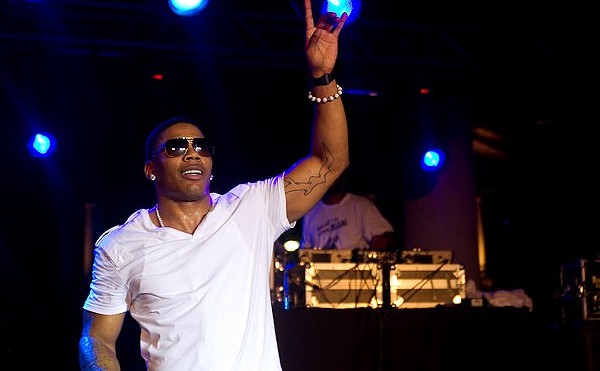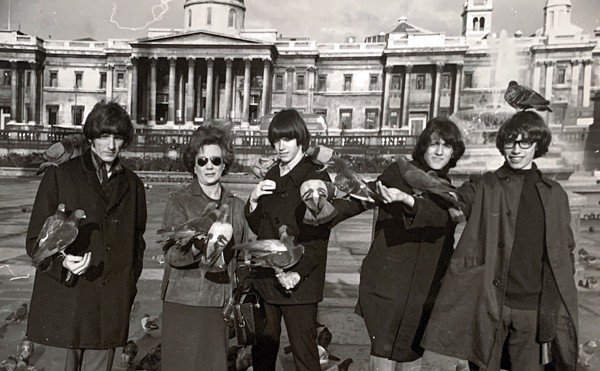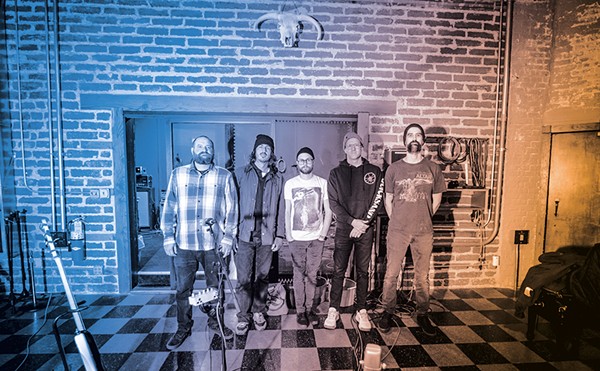If you've needed an excuse to feel old lately, consider that next year marks the twentieth anniversary of Riot Grrrl. In the summer of 1991, a small group of smart young women in Washington, D.C., and the Pacific Northwest began spreading rumors of a "girl riot" through a makeshift network of fanzines, pen pals and basement shows. The results — thought-provoking fanzines such as Girl Germs and Jigsaw, incendiary bands such as Bikini Kill and Bratmobile — were exciting, controversial, inspiring and polarizing. Many of us are still sifting through the remains, trying to figure out what it all meant.
For author Sara Marcus, that's a phrase with literal overtones. In 1991, she was a teenage feminist living in the D.C. area. She'd read about Riot Grrrl in Newsweek and was intrigued to find out that she was living near the movement's epicenter. Not until 1994, in the wake of Kurt Cobain's suicide, did she finally attend a meeting at Arlington, Virginia's Positive Force house. There, in a metal filing cabinet, she discovered artifacts from a time that already seemed long past: "...old meeting minutes, convention schedules...paste-up originals of old 'zines...drawers full of letters from girls like me seeking encouragement, hope, connection. These files haunted me."
These ghosts finally take shape in Marcus' new book, Girls to the Front: The True Story of the Riot Grrrl Revolution. The result of five years of writing and interviewing, Marcus is one of the few authors to understand that Riot Grrrl was never just a musical movement. We hear from such big names as Kathleen Hanna, Allison Wolfe and Corin Tucker early on, but they gradually fade into the background as new generations claim the Riot Grrrl name and start chapters in their own hometowns. It's these seemingly bit players that ultimately make Girls to the Front so fascinating. They were the ones, after all, who had to deal with the ugly aftermath of condescending press, hurt feelings and a general exhaustion that all but killed the movement by the mid-'90s. (The story of Bratmobile's 1994 onstage breakup, for instance, is just plain sad.)
And yet, like punk itself, Riot Grrrl continues to exert an iconic, nearly timeless influence. It has inspired dozens of books, hundreds of songs, thousands of fanzines and countless Internet bytes. Very few, however, have really included the fans, 'zine editors and countless lonely suburban bedroom-dwellers in the story arc. Marcus has, and that's why Girls to the Front may be the last word on a complicated subject. Just before leaving on a book tour, Sara Marcus answered some questions.
Mike Appelstein: What made you decide to write this book? Were you conscious of making it different from the many other "women in rock" books that have littered the shelves over the years?
Sara Marcus: I grew up in Riot Grrrl. It was one of the most important influences on my life in late adolescence. Ten years later, I decided to write this book because I saw that the legacy of Riot Grrrl was getting distorted. People were increasingly talking of it as a style of music rather than as a grass-roots radical feminist movement of young women. This didn't surprise me — every word in the above description (with the possible exception of "movement" and "of") represents something that often gets twisted or lost to history.
How did you get the interview subjects to open up to you? Most of them have been pretty tight-lipped over the years. Did anyone refuse to participate?
It all proceeded from word of mouth. I knew a few key people early on, and they vouched for me with other people. When I began working on the book, Friendster was just catching on, and throughout the project I very frequently would contact people via Friendster, then MySpace and finally Facebook. These platforms enabled everybody to see how I was already just one or two degrees of separation away from them, friend-wise, and I think that helped convince people to trust me. I think people were also more willing to open up because I had been involved too; I wasn't coming from an outsider's perspective.
What were some of the biggest surprises in your research or writing? Something that you, or we, did not know about Riot Grrrl beforehand?
I suppose the biggest surprise was how bad things eventually became for a small group of people. As I relate in the book, there were a few people who used some of the political tenets of Riot Grrrl to wield power over other people, both other girls and their male allies. This was occurring at precisely the same time that I was becoming involved, and I had no idea it was happening. That it would happen at all didn't surprise me — I had been involved in enough political organizing to understand how hierarchies of oppression and fetishization of victimhood can operate and can tear groups apart — but I hadn't been aware that it had become such a big deal within Riot Grrrl. It's important to me that these things not diminish the value of what Riot Grrrl as a whole was. These are important cautionary tales, but they're far from the whole story.
Music is ostensibly what brought everyone together, but very early on the story shifts to being about 'zines and networking. Was music actually an incidental part of the movement?
The songs were like a dream everybody was sharing. The bands were inspiring people and providing a rallying point. Punk-rock music was functioning as a metaphor, a theatricalized version of power and guts that people took and turned into whatever they wanted. Music wasn't incidental, but it was one part of the whole.
Could Riot Grrrl have happened the way it did without the mainstream coverage from Sassy, Newsweek, Spin, etc.? I've always wondered whether, without the media attention, it would have just been another strain of '90s underground music.
I think you're right, and I think that's one of the central dialectics of the story.
One of the repeating themes of the book's subjects is the idea that they thought they were alone, then after much hard work (letters, 'zines, word of mouth, 7" singles), they found this cool group of people. Could Riot Grrrl have happened today in this interconnected age? Is it almost too easy now?
It's too easy, and it's also too difficult. The hard-won relationships we formed in the '90s via zine and mail networks were so precious because we had had to do so much work to find them. But it's also important to remember that those relationships were very individual, very handmade. We may have Xeroxed 100 copies of a 'zine, but we hand-addressed every one, and in most cases we also hand-wrote a personal letter to insert into each issue we sent out, and we expected a well-thought-out handwritten response in return. I think online connectivity is too wholesale these days; there's not enough retail. And so we see that online communities and social networking is not actually alleviating people's isolation; it only appears to, but the connection too often doesn't go beyond skin-deep.





